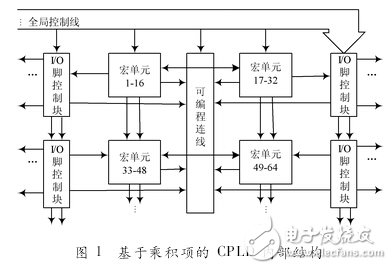Programmable Logic Devices (PLDs) have revolutionized the design of digital systems. His influence is no less than the invention and use of the MCU in the 1970s. It is no exaggeration to say that the PLD can perform any digital device function, up to the high-performance CPU, down to the simple 74 circuit. Using PLDs to develop digital circuits can significantly reduce design time, reduce PCB area, and increase system reliability. These advantages of PLD have enabled PLD technology to develop rapidly after the 1990s, becoming the most dynamic and promising technology in the field of electronic design.
At present, this technology PLD extends two branches according to its internal structure, namely Complex Programmable Logic Device (CPLD) and Field Program-MableGate Array (FPGA), which are collectively referred to as programmable logic. Device or CPLD/FPGA.
1 PLD development process
Early programmable logic devices were only programmable read only memory (PROM), ultraviolet erasable read only memory (EPROM), and electrically erasable read only memory (E2PROM). Due to structural limitations, they can only perform simple digital logic functions.
Later on, there was a class of slightly more complex programmable chips, the programmable logic device (PLD), which was able to perform a variety of digital logic functions. At this stage (around the mid-1970s), the main products were Programmable Array Logic (PAL). The PAL consisted of a programmable AND plane and a fixed OR plane. The output of the OR gate can be The trigger is selectively set to the registered state. The PAL device is field programmable, and its implementation process includes anti-fuse technology, EPROM technology and E2PROM technology.
In the early 1980s, on the basis of PAL, a general array logic (Generic Array Logic, GAL) was developed. He used the E2PROM process to realize the electrical rewritable and electrically rewritable. The output structure is programmable logic. The macro unit, and thus his design is very flexible, and many people still use it.
In the mid-1980s, in order to make up for the above defects, Erasable Programmable Logic Devices (EPLD) were introduced. CPLD and FPGA, EPLD have higher integration and more flexible design, but the internal connection function is weaker.
2 Structure comparison
Different manufacturers call PLD differently, but in general, the PLD based on the product item technology, FLASH (similar to E2PROM process) is called CPLD; based on the look-up table technology, SRAM process, PLD called E2PROM is called FPGA. The following compares the two from the internal structure.

Introduction
SCOTECH manufactures a full range of cast resin dry type transformers ,they are designed primary as an MV insulation system, cast resin technology provides excellent insulation and environmental protection, this together with the foil winding technology inside the resin offers the ultimate Dry Type Transformer in terms of dielectric performance and short circuit withstand and ensures long term reliability for both distribution and special applications. Cast resin transformers can be supplied with either aluminum or copper windings together with possibility of class F or class H resin system.
Advantages
Fire resistant /Self-extinguishing(F1)
Environmental class(E2) and climatic class (C2)
From IP00-IP56 enclosure with AN, AF, ANAF or AFWF cooling
Free maintenance
Environmental friendly ,>90% of material recyclable
Scope of supply
Voltage level: up to 35KV
Rating level: up to 20MVA
Standards
SCOTECH`s cast resin dry type transformers are designed and manufactured in accordance with all major international standards (IEC, ANSI, UL, CSA etc.)
Why SCOTECH
Long history- Focus on transformer manufacturing since 1934.
Technical support – 134 engineers stand by for you 24/7.
Manufacturing-advanced production and testing equipment, strict QA system.
Perfect service-The complete customer service package (from quotation to energization).
Cast Resin Dry Type Transformer
Dry Transformer,Cast Resin Transformer,Resin Encapsulated Transformer,Cast Resin Dry Type Transformer
Jiangshan Scotech Electrical Co.,Ltd , https://www.scotech.com